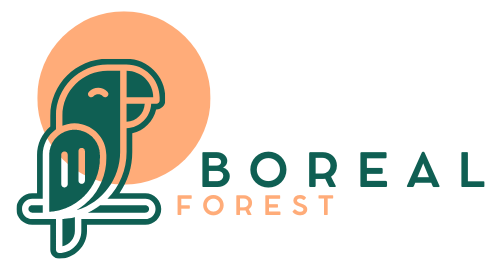The red pine is also called Norway pine. It is one of the most extensively planted species in the northern United States and Canada.
General – large-sized, averaging 23 – 32 m (75 – 105 ft) high, evergreen conifer. Crown sparse, oval, over a straight, limbless trunk with little taper. Branches spreading with foliage tufted at the ends, resembling a fox tail. Branchlets medium textured, orange-brown in color with orange-brown buds. Trunk bark on young trees, red-brown or pink to gray, flaky. Eventually becoming plated. The plates have scaly surfaces.
Jack PineLeaves – evergreen, 1.5 – 2.5 cm (4 – 6 in) long, with two needles per fascicle that snap cleanly when doubled.
Flowers – monoecious, males almost round, light red, in large clusters at branch tips; females a round, short cone, reddish-brown, appearing in May.
Fruit – cones are ovoid, tapering broad near the base and tapering to a point at the tip, 4 – 6.25 cm (1.5 – 2.5 in) long. The apophysis is chestnut brown and the umbo is not armed. Maturing August to October.
Habitat

Widespread throughout Northwestern Ontario but most common in the southwestern areas. On the coarser, drier soils, common associates of red pine are jack pine, trembling aspen and large-toothed aspen. On somewhat better soils (fine sands to loamy sands), in addition to the foregoing, associates may be eastern white pine, red maple, balsam fir and black spruce.
Notes

Red pine has been grown primarily for the production of wood for lumber, piling, poles, cabin logs, railway ties, posts, mine timbers, box boards, pulpwood, and fuel. It has been one of the most extensively planted species in the northern United States and Canada, not only for wood production but also for snowbreaks, windbreaks, and Christmas trees. Even when wood production is the main goal, red pine forests often are managed throughout their rotation for other uses such as recreation, wildlife habitat, and watersheds.
Although red pine stands generally are considered poor habitat for game birds and animals, they provide cover, nesting sites, and some food for many species of birds and animals.

